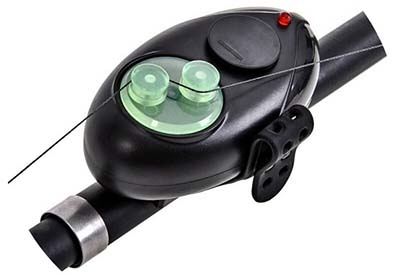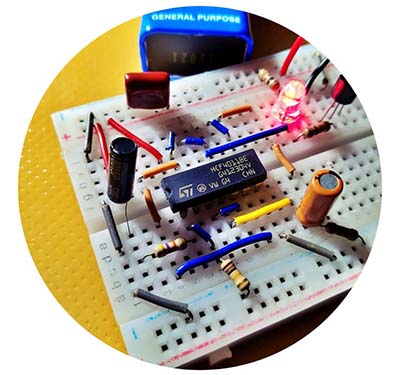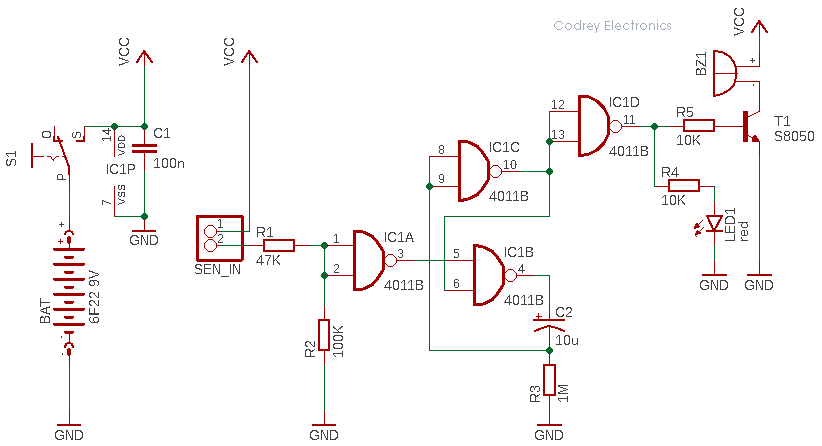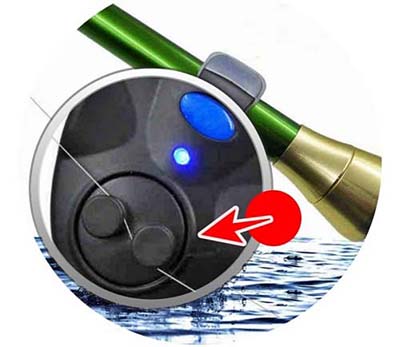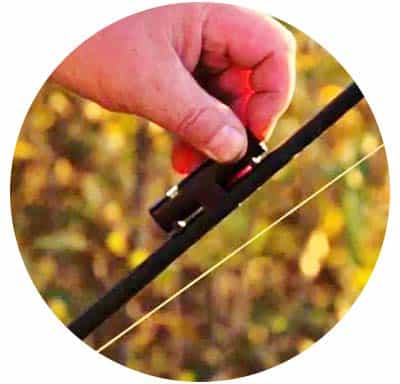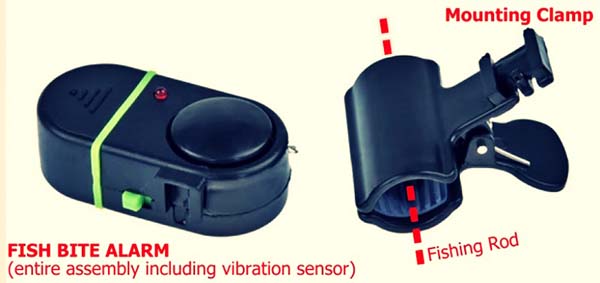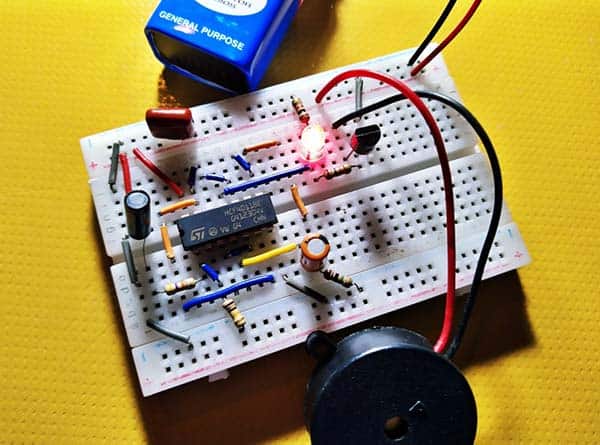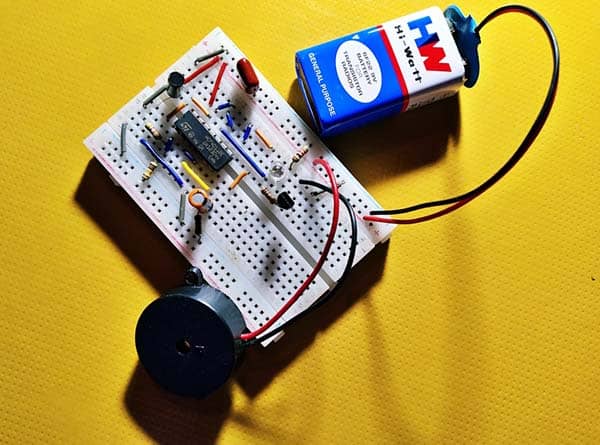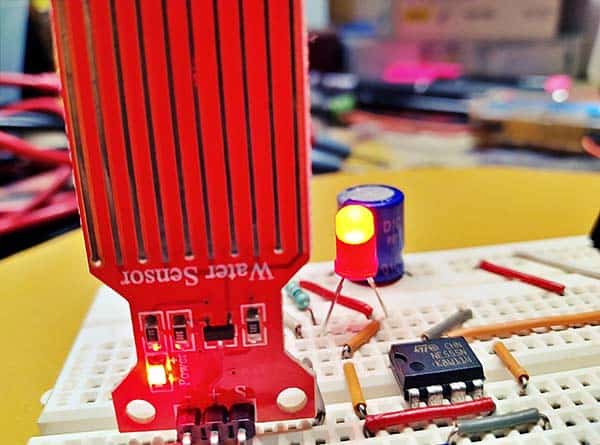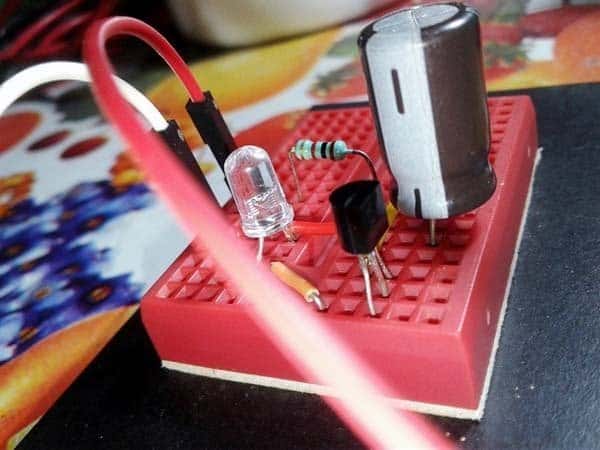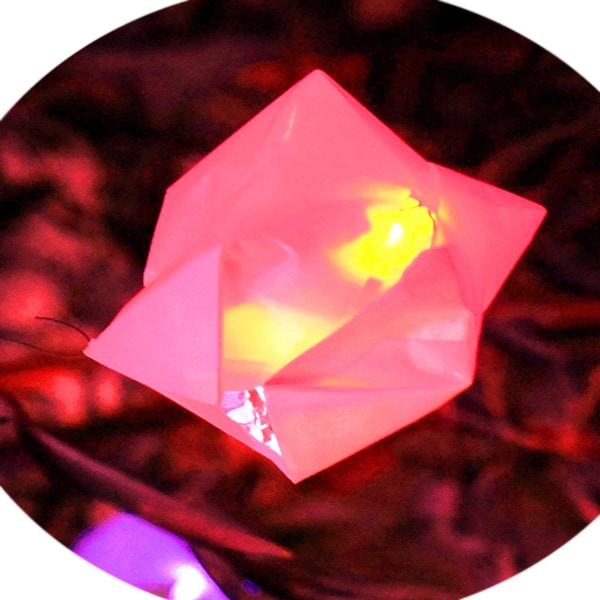A fish bite indicator is a mechanical bell or electronic alarm that indicates to an angler that something is happening at the hook end of the fishing line. There are many types of fish bite indicators but the most popular type is the electronic version which bleep when a fish tugs the fishing line.
In this post, you can see the project details of a low cost fish bite alarm that is powered by a compact battery pack. Equipping your fishing rod with this bite alarm has some advantages as the device gently informs the angler (you) that the fish has taken the bait with noticeable audio and visual signal. This is particularly useful for night fishing as the visual indicator glows brightly when a fish is biting. Therefore, you do not always have to stick to your fishing rod!
My fish bite alarm is a simple design based on one quite popular Quad 2-Input NAND gate IC – the HCF4011B and a cheapo tiny vibration sensor – SW18015P, which is proved to be pretty reliable.
Below you can see the complete schematic of my fish bite alarm (v1).
Now to the list of parts:
- IC1: HCF4011B (https://www.st.com/resource/en/datasheet/cd00000361.pdf)
- T1: S8050/SS8050 (https://datasheetspdf.com/pdf-file/1140410/JinYu/S8050/1)
- LED1: 5mm Red (high-bright type)
- R1: 47K ¼ w
- R2: 100K ¼ w
- R3: 1M ¼ w
- R4 & R5: 10K ¼ w
- C1: 1oon
- C2: 10uF
- BZ1: 27mm Active Piezo Buzzer (9-12VDC)
- S1: Slide/Toggle Switch 1 C/O
- SEN_IN: 2-pin connector for SW18015P (https://datasheetspdf.com/pdf-file/684418/Mobicon/SW-18015P/1) Vibration/Shake Sensor
- BAT: 6F22 9V
The circuit also has a battery and beeper which now is a 6F22 9V battery and a 27mm active piezo buzzer. Note that this circuit only register a vibration on the fishing rod without a latching indicator i.e., it only delivers an audio-visual alert that lasts for a couple of seconds (the latch would mean the alert will alive until it is switched off, meaning it is less likely to miss in windy or noisy conditions).
And, from a bit of googling and testing it seems that the tiny vibration sensor can be replaced with a micro tilt switch. I found many micro tiny tilt switches that are small enough to mount on a fishing rod. The next alternative is the employment of a simple ‘cam and microswitch’ assembly as found in most commercial fish bite alarms (this option requires good mechanical assembly skills). See, in this fish bite alarm, the fishing line is wound on a cam (running roller) which triggers an associated microswitch (or a photoswitch) when the fishing line moves over it, thus waking the alarm circuitry up.
Here, IC1 is configured as a delayed-off NAND gate (https://www.electronics-tutorials.ws/logic/logic_5.html) timer.
When the input SEN_IN is closed by Sw18015B sensor (or any other applicable sensor), LED1 and the BZ1 comes on instantly and remain in that state for a finite period set by the RC timing components. If you want the alert to remain active for a longer period, then you can increase the value of the timing capacitor C2. Also, since the driver transistor T1 can handle load currents up to 500mA conditionally, you will be able to use a bit more powerful (>90dB) sounder in lieu of the small piezo buzzer.
In short, the principle of operation is based on the rule of a vibration sensor. When biting the bait on the fishing line, the fishing rod vibrates and thus excites the vibration sensor. As a result, the vibration sensor enables a simple electronic timer and a noticeable alert is given for a finite duration. You should adjust the position of the vibration sensor on the fishing rod so that the alert signal will come only after a strong vibration of the fishing line/rod with the fish.
At this point, it’s also worthy to notice that the use of this fish bite alarm does not guarantee a good catch. It is very important to properly configure your final setup (sensor and alarm) so as not to wake up from every gust of wind or turbulent rapids!
Moreover, this is an inspired final enclosure idea (Original Product: D4 J1X9 Electronic Night Fishing Rod).
My breadboard snaps:
All that is left to say is that, as you can perceive, building and using a fish bite alarm is a thorough subject that needs a lot of research and personal choice. If you are interested to understand how to build a luxurious electronic fish bite alarm then stay tuned for the next three posts in this series – Fish Bite Alarm v2, Ice Fishing Rod, and Shark Alarm. I will be discussing these in detail there. Well, good luck and have a lovely time out on the water!

